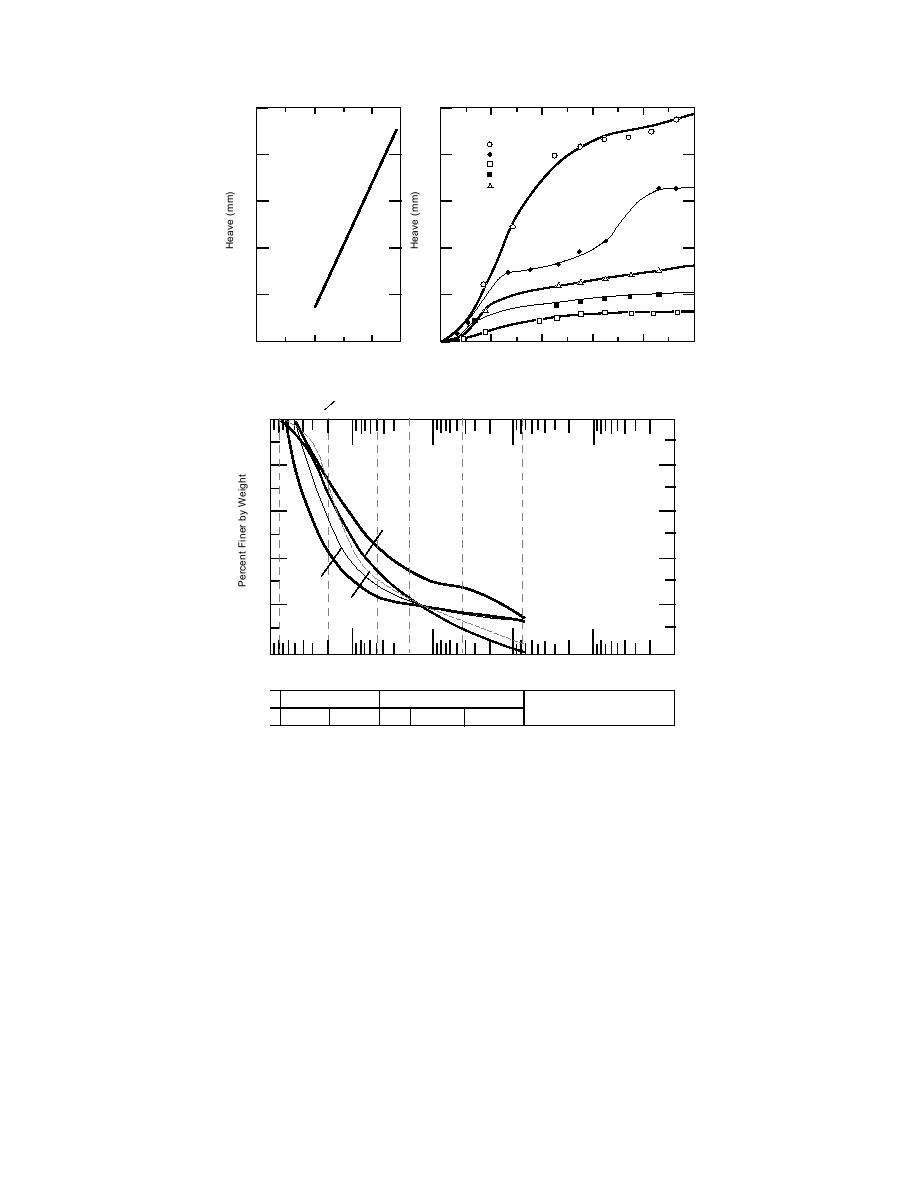
25
25
+
Saturation Moist. Cont. (%)
3.6 %
20
20
4.6
2.1
2.4
+ ++
2.5
+
15
15
+ ++
10
10
+
+
++
5
5
0
0
1
3
5
2
4
50
100
150
200
250
Saturation
Hours of Freezing
Moisture Content (%)
U.S. Std. Sieve Size and No.
Hydrometer
3
3
4
4
10
40
200
100
80
2.5 %
60
2.1
4.6
40
3.6
2.4
20
0
1.0
0.1
0.01
0.001
0
100
10
Grain Size (mm)
Gravel
Sand
Silt or Clay
C'rse
Fine
C'rse
Medium
Fine
Figure 7. Frost heave of various magnesian limestones (1 in. = 25.4 mm).
tures commonly used for increasing the bearing
should be reduced to 6% or at least to 8%, similar
capacity of the layer are cementing agents such as
to that currently specified for the P-209 crushed
lime, limefly ash, portland cement, or asphalt.
aggregate base. A second specification that should
Another kind of stabilization is mechanical, where
be added is that, in cold regions, the material finer
gravel is added to soil to improve the gradation
than 0.02 mm has to be less than 3%.
and mechanical properties.
The FAA allows slags as aggregates in some of
Stabilization admixtures used for reducing frost
its base course specifications. Results from Croney
heave include chemicals to prevent freezing of the
and Jacobs (1967) found that slags are non-frost-
soil water (such as calcium chloride or sodium
susceptible even though they have excessive fines
chloride), chemicals to aggregate the soil particles
(up to 26%). Kettle and McCabe (1985) found that
into larger units, or chemicals that waterproof the
addition of slag (up to 50%) reduced frost heave
soil particles and cements (lime, cement, and as-
by 60% in a frost-susceptible granular mix.
phalt). This report will concentrate on cementing
agents, since the FAA specifications being evaluat-
Stabilized materials
ed use this type of admixture for stabilization.
Pavement structures have been stabilized to ei-
Soils generally suited for lime stabilization are
ther improve unsatisfactory subgrade soils or to
granular materials and lean clay (CL) subgrades.
decrease their thickness, or both. Types of admix-
12



 Previous Page
Previous Page
